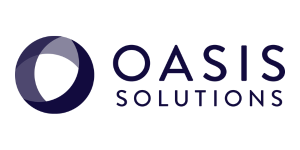Employee engagement is promoted by a myriad of consultants, books and articles, but does it really produce a tangible return on investment? With multiple business priorities, why should leaders focus on increasing employee engagement? Simply put, it is because higher engagement leads to better job performance.
In fact, the evidence is clear: employees who are engaged in their work and committed to their organizations give companies crucial competitive advantages, including higher productivity and lower employee turnover. In tough economic times, maximizing the productivity of your workforce is more important than ever. And HR is uniquely positioned to lead the way by implementing a strategy to increase employee engagement.
1. Job and task design. Provide enriched work—jobs with high meaningfulness, variety and autonomy to build trust and worker engagement. Both job enlargement (broadening the scope of an employee’s tasks) and job enrichment (providing more complex, enriching tasks) are important to motivating employees and keeping them engaged.
Jobs that have variety, significance, autonomy and performance feedback will promote internal motivation, personal responsibility and job satisfaction—all of which increase employee willingness to pursue both prescribed and voluntary work. Researchers have also identified social traits of work that help motivate employees. These include feedback from others, interdependence and willingness to get good feedback and support from co-workers.
2. Recruiting. Whenever possible, recruit current employees for new, more desirable jobs, rather than going outside the organization. By drawing on available workers who are already loyal to the firm and understand its mission, a good fit is more likely, thus enhancing employee engagement.
For example, the Randstad Engagement Index found that 61 percent of employees expect to grow their careers with their current employers and just over one-third plan to seek a new position within their current company. Clearly, if opportunities for advancement exist, many employees would prefer to remain with their current organizations. When it is necessary to recruit outside candidates, promote features of the job that are likely to spark engagement and commitment quickly. For example, if candidates have family obligations, highlighting the firm’s family health benefits, on-site daycare or flexible work policies could cement a strong commitment from applicants.
3. Employee selection. During the selection process, present some tough hurdles that candidates will have to surmount as employees. This will give them a sense of accomplishment even before they are hired. Look for candidates who will not only perform their duties well, but will also be willing to “go the extra mile” and perform voluntary tasks.
4. Training and development. Offer professional development opportunities for your employees. Consider
leveraging digital technology and online training to reduce travel expenses and provide more flexible training schedules.
Offering good training is among the best ways to ensure employee productivity and dedication. Employees who enhance their skills through training are more likely to engage fully in their work because they derive satisfaction as they master new tasks and increase future employability. Investing in employees’ careers through training, professional development or continuing education was ranked by employees as the fourth most effective engagement tool. Plus, increasing engagement through training also decreases turnover.
5. Compensation. Provide competitive total rewards commensurate with employee contributions. Ensure the design of your compensation plan—including pay, benefits and non-financial perks—reinforces the organization’s strategic
objectives (innovation, teamwork, etc.)
Pay and benefits that are perceived as fair and competitive will motivate employees to be more committed because the organization is signaling its own commitment to them. Options for supporting specific objectives include incentive pay to reward outstanding individual or team performance, competency-based or skill-based pay to encourage continuing education and development of skills, and flexible benefits and retirement plans to promote work/life balance and long-term commitment to the organization.
6. Performance management. Link job objectives to the organization’s objectives and priorities and include employees in the goal-setting process, because their commitment increases if they help define the goals. Don’t neglect positive feedback, including praise for voluntary work. Find ways to recognize contributions that exceed expectations. Being compensated for a job well done fosters high engagement, particularly for high performers. Offering promotions or bonuses to high performing employees was ranked by workers as the most effective engagement tool. In the same survey, more than half of employees (54 percent) ranked “feeling their efforts are recognized and valued” as one of the most important factors affecting their attitude toward their job.
To assist employees, managers should provide ongoing feedback rather than waiting for the annual review. Providing specific, constructive feedback will help employees understand how to be successful in the organization and let them know that their contributions are valued.


